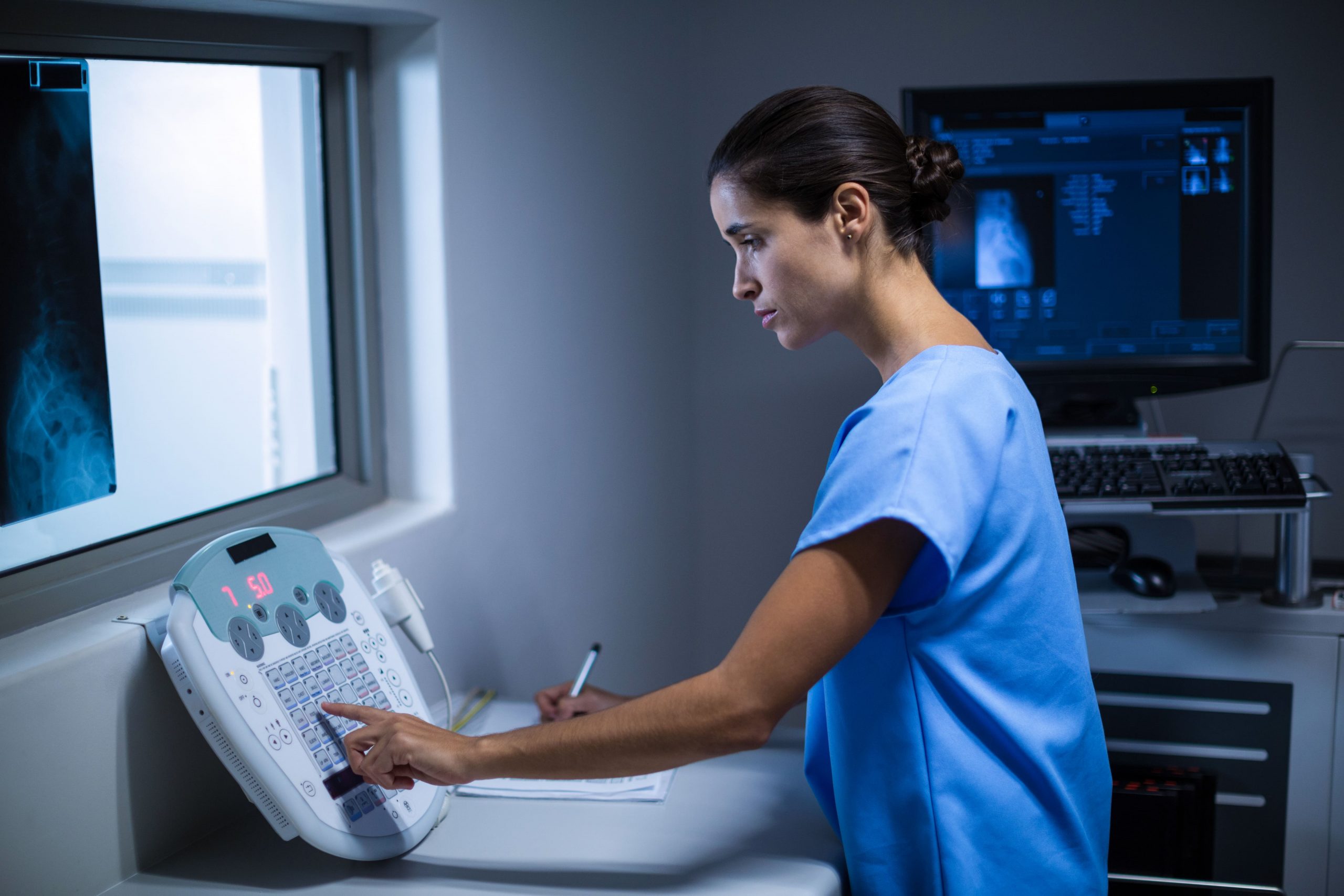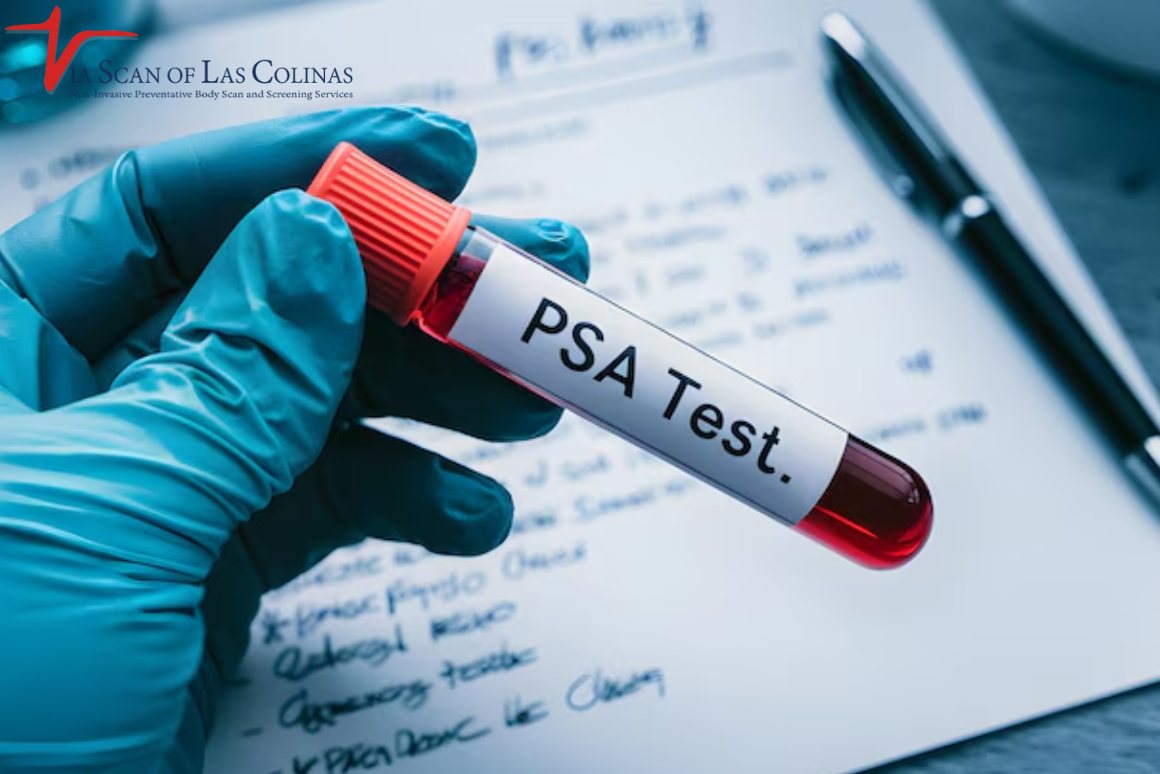Like a smoke detector warns you of danger ahead, PSA levels can alert you when you should take some concern about your health. One of the most significant tools for men to maintain their health as they age is PSA testing. Although the term dangerous may be frightening, a large proportion of high levels of PSA are not life-threatening. Instead, they are like a pat on the shoulder to say Hey, let us take a closer look. It is essential to understand your figures and determine the next steps.
At ViaScan, we understand how medical figures can be confusing and even alarming. This is why we have aimed to offer clear and advanced imaging services that accompany your PSA results, providing you with a detailed picture of your inner organs. With the assistance of the professional team that utilizes modern technology, we identify problems at their first or most curable stages. Always remember that early detection saves lives.
What is considered a dangerously high PSA level?
PSA is measured in nanograms per milliliter (ng/mL) of blood. According to the American Cancer Society, doctors consider a PSA level of 4.0 ng/mL or lower to be normal in most men. A range of 4.0 to 10.0 ng/mL is considered moderately high and requires further investigation. A PSA level greater than 10.0 ng/mL is considered high and needs medical attention as soon as possible.
It all depends upon your age and your personal circumstances, however. The PSA reading of 6.0 ng/mL may be more problematic in individuals 50 years old or older. It is also notable that PSA levels are increasing over time.
| Age Group | Normal PSA Range | Elevated Range | High Risk Range |
| 40-49 years | 0-2.5 ng/mL | 2.6-4.0 ng/mL | Above 4.0 ng/mL |
| 50-59 years | 0-3.5 ng/mL | 3.6-6.5 ng/mL | Above 6.5 ng/mL |
| 60-69 years | 0-4.5 ng/mL | 4.6-8.0 ng/mL | Above 8.0 ng/mL |
| 70+ years | 0-6.5 ng/mL | 6.6-10.0 ng/mL | Above 10.0 ng/mL |
What is the primary reason for high PSA?
Most causes of a high PSA are not usually cancer. Your PSA may be high because of the following reasons:
- Benign Prostatic Hyperplasia (BPH): It is an enlarged prostate that is common in older men.
- Prostatitis: The Prostate is infected.
- UTIs: These may temporarily increase the level of PSA.
- Recent medical interventions: Biopsies, a catheter placed, or prostate surgery may lead to temporary spikes.
- Age: PSA levels increase naturally as men age.
A PSA test, combined with advanced imaging techniques such as MRI for elevated PSA or health scanning, provides a more accurate health report. With ViaScan imaging, you and your doctor have the information to differentiate between these causes and make the correct diagnosis.
Will high PSA cause other symptoms?
Having a high PSA level by itself does not necessarily lead to symptoms, as PSA is merely a protein in the blood. A lot of people who have elevated PSA levels do not experience any change, so screening is important to help identify issues at an early stage.
The symptoms may occur with a high PSA and are common, including:
- Changes in the urine: difficulties initiating urination, a weak urine stream, or nighttime urination.
- Pain: Pain or burning during peeing.
- Bladder problems: This is characterized by a sensation of being unable to empty the bladder.
- Pelvic pain: Pain in the lower back, hips, or pelvis.
Remember that a great number of things other than PSA levels, prostate cancer risk may cause these symptoms. Total wellness body scanning by ViaScan can help determine the cause of these symptoms and provide comfort.
How is elevated PSA treated?
The management of high PSA is based on the cause of high PSA. ViaScan offers superior imaging, giving your doctor an opportunity to decide the most suitable treatment.
Active surveillance may be prescribed, which means that you follow up regularly on the level of PSA and wait before considering treatment. In cases of high PSA due to an infection, it is typically cured with antibiotics. According to the Mayo Clinic, if an enlarged prostate is the culprit, medications can help shrink it or improve urine flow.
In case the PSA level indicates that you have a high prostate cancer risk, your doctor may recommend a biopsy to identify cancer cells. PSA, along with ViaScan imaging, provides the most satisfactory information prior to any invasive exam. Wellness screening can be used to prevent unnecessary biopsies by identifying suspicious spots.
How can I treat high PSA at home?
High PSA cannot be directly treated at home, but through simple lifestyle modifications, it is possible to support the health of your prostate. The following measures can help maintain a healthy level of PSA and promote a positive health condition.
- Consume additional tomatoes to help maintain prostate health.
- When it comes to fruits and vegetables, green tea, fatty fish, which contain omega-3 fats, and an abundance of them are also good.
- The NIH reports that limiting red meat and high-fat dairy products may also be beneficial.
- Walking for 30 minutes per day can be beneficial. Exercising well and maintaining body fitness also helps keep the prostate healthy.
It is essential to remember that home remedies are not a substitute for professional medical care. Be aware of your PSA level before and have a health check-up early to achieve maximum results.
Does a high level of PSA mean that I have prostate cancer?
No, it is not possible to determine whether you have prostate cancer with just high PSA levels. PSA is a screening test, not a final test. Cancer is not the only factor that can alter PSA levels. Approximately 75% of the men who have high PSA do not necessarily have prostate cancer. There are normal PSA levels in some men with cancer, particularly at an early stage. Thus, you require additional tests and images, along with PSA, to have a clear picture.
The imaging of ViaScan aids the process.
The scans indicate to doctors whether certain spots require further examination. This comprehensive method eliminates anxiety and provides a specific diagnosis when PSA levels are also tested.
At what age should I begin to screen for prostate cancer?
The majority of physicians recommend discussing PSA tests with your doctor starting at age 50 or so. Men at greater risk should consider discussing it earlier, between the ages of 40 and 45.
Higher risk factors include:
- Family history: prostate cancer runs in the family.
- Genetic factors: some genetic modifications are inherited and put at risk.
The decision on when to start PSA screening should always be made in consultation with your physician, taking into account your individual risk factors and health status. The importance of getting regular screening increases with age.
Through ViaScan, prostate care is facilitated through full imaging services. Our special imaging provides comprehensive diagnostic information when PSA levels are elevated.
Choose Our Preventive Colonoscopy Scan
Early Detection Saves Lives!
-
- Accurate
- Quick Result
- Affordable

Conclusion
There is nothing to worry about or be puzzled by regarding your PSA test. It is best done through collaboration with doctors and other experts, who will correctly interpret your results and advise you on the next steps. The ViaScan team utilizes the latest imaging equipment and takes care of you, providing clear answers.
We provide comprehensive body scans, heart and lung tests, and specialized CT scans that assess your overall health. Combine that with the PSA test provided by your doctor, and ViaScan offers the best view for identifying issues early and providing you with peace of mind.
High levels of PSA are not unusual and may be treated. No, just take a good check. Early screening and proper imaging can identify problems early, allowing you to receive superior treatment. Call ViaScan and discover how our imaging technology can help assess your health and provide you with clear insights.



